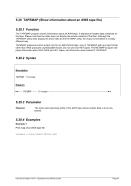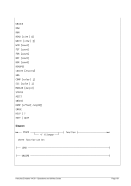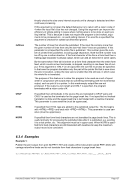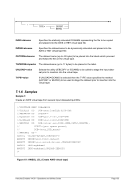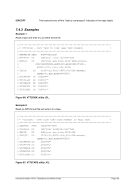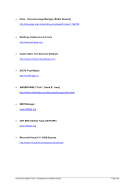-m
Enable the wait PSW in the IPL1 record for machine check interruptions. If this
option is not specified, the wait PSW will be disabled for machine checks.
-linux
Null track images will look like Linux DASDFMT’ed images (3390 device type only).
arguments:
filename
The name of the DASD image file to be created.
devtype
Specifies the device type. Valid device types are:
FBA: 0671, 3310, 3370, 9313, 9332, 9335, 9336
CKD: 2311, 2314, 3330, 3340, 3350, 3375, 3380, 3390, 9345
A complete list of all Hercules supported DASD device types and models with
additional information can be found in Appendix A.
model
Specifies the device model (note – this implies size). A list of Hercules supported
device types and models can be found in Appendix A.
volser
Volume serial number (1-6 characters).
size
Number of CKD cylinders or 512-byte FBA sectors (required if model not specified,
otherwise optional).
For CKD volumes which exceed 2GB, such as the 3390-3, if the -lfs parameter is not specified the DASD-
INIT program will create multiple files by appending the characters _1, _2, _3 etc. to the file name speci-
fied on the command line. These characters are inserted before the first dot (.) occurring after the last
slash (/). If there is no dot then the characters are appended to the end of the name. Each file contains a
whole number of cylinders.
Hercules CKD support recognizes the files as belonging to a single logical volume. Specify the full name
of just the first file in the Hercules configuration file (e.g. "filename_1").
The DASDINIT program cannot create FBA volumes exceeding 2GB unless the -lfs parameter is speci-
fied and large file size is supported on your platform.
Note that the defaults for the wait PSW written to the IPL1 record have changed from earlier releases of
Hercules. In the past, the wait PSW created by DASDINIT was a BC-mode PSW enabled for machine in-
terrupts. The current default for the wait PSW is EC-mode, disabled for machine checks. To obtain the
earlier behaviour, run DASDINIT with the ‘-b’ and ‘-m’ options.
5.9.4 Examples
Example 1:
Create a 3390 Model 3 with volume serial USR001, the file(s) should be named USR001.300 and place
them into directory D:\MVS\DASD\. Note that the utility creates actually two files called USR001_1.300
and USR001_2.300 because no large file support is requested.
DASDINIT D:\MVS\DASD\USR001.300 3390-3 USR001




























































































